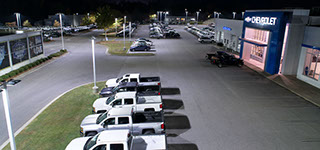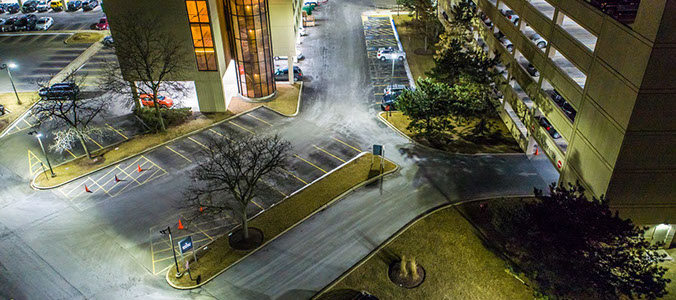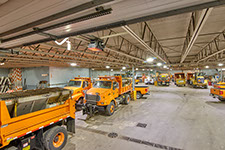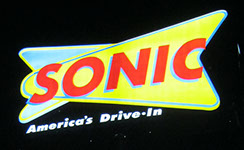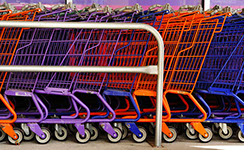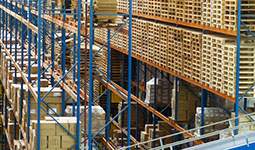
You’ll see LED lighting
in the best places.

Optec LED Lighting products are suited for a wide variety of commercial, transportation, industrial and institutional applications. They greatly reduce energy consumption and costs while virtually eliminating maintenance. The time and money saved on upkeep is now redirected to other needs.
Compared to traditional metal halide or the industrial look of fluorescents, aesthetically pleasing Optec LED lighting fixtures significantly add to curb appeal and help draw in customers. As an added benefit, the increased visibility, true color rendering, and uniform lighting help reduce crime.
Applications
With large sales lots, numerous buildings and 24-hour demand for light, it’s no surprise that reducing energy costs is a major consideration for automotive and equipment dealerships. Thanks to Optec LED Lighting, dealerships can improve selling conditions and lower operating costs. That’s because Optec LED luminaires provide… read more >
According to the U.S. Department of Energy, energy-efficient renovations—replacement of inefficient boilers, lighting, and other systems—could reduce school energy costs by 30 percent. This is money that could be spent on hiring new teachers and purchasing textbooks… read more >
Balanced and even exterior lighting that’s designed to fill the gap between the property boundary and the hotel entrance is the most important nighttime security feature for lodging facilities. When bathed in light, public areas are both inviting to the guest and… read more >
Municipalities throughout the country are upgrading to LED luminaires as a way to promote efficiency, lessen expenses, support the safety of municipal employees and residents, and improve the improve the quality of life for all members of the community. As a steward of taxpayers’ funds, municipalities realize… read more >
Parking structures present a challenging environment for lighting. The illumination system must accommodate both vehicular and pedestrian traffic, endure harsh operating environments, and address public safety considerations as well as lighting quality issues, all in the most economical way possible… read more >
The U.S. Environmental Protection Agency estimates that if a QSR, fast casual or fine dining restaurant cuts its energy costs by just 20 percent, profits could increase by 30 percent or more. One way restaurants are making day-to-day operations more energy efficient and sustainable is through the installation… read more >
Retail stores, shopping malls and entertainment complexes are major energy consumers. Malls, “big box” mega-stores and retail outlets are not usually considered energy intensive on a square foot basis; but because of their large size and long hours of operation, they often run up extensive energy bills… read more >
In a typical non-refrigerated warehouse, lighting and heating account for nearly 76 percent of total energy consumption. Energy costs typically account for 15 percent of a warehouse’s operating budget.
Studies have shown that improving the lighting environment can result in an increase in worker… read more >


